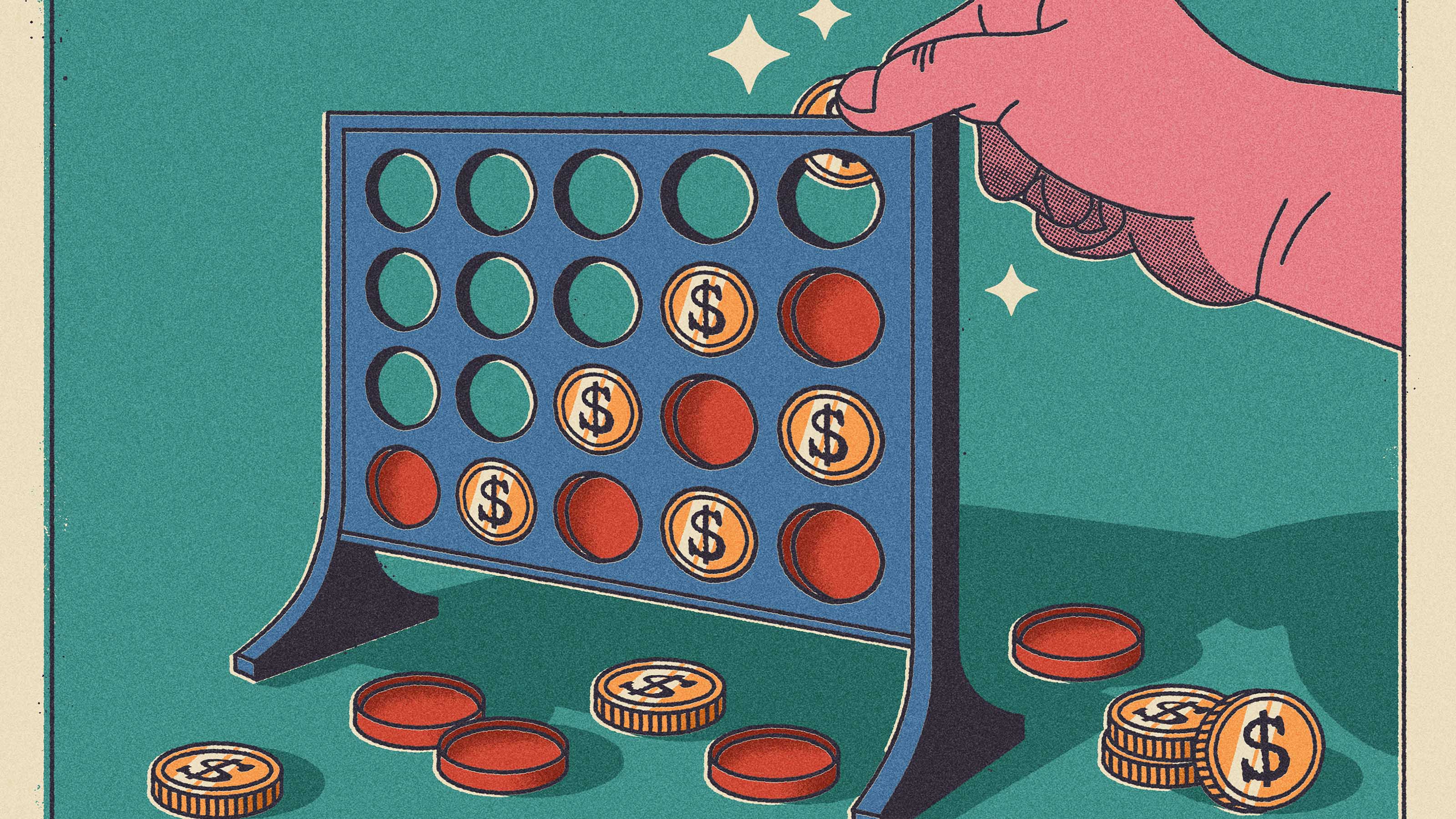High Yields From High-Rate Lenders
Investors seeking out high yields can find them in high-rate lenders, non-bank lenders and a few financial REITs.


A likely peak in inflation, along with interest rates that are thereby also at or near their apex, stands to revitalize the long-running global search for high yields.
That should mean more demand for high-yielding credit securities, which include business development companies, or BDCs (typically high-rate lenders to small or midsize firms, with similar tax advantages to those of real estate investment trusts), nonbank lenders, and a few financial REITs. If 5% is the new 1% in the broad bond market, then it is not far-fetched to proclaim 8% the new 5% for these securities.
Although some investments priced to yield 8% are unappealing if you swallow all the economic gloom, the majority of these publicly traded lenders are having no trouble disbursing interest and dividends to their investors in full and on time. And lending at higher interest rates helps these firms build up their underlying asset values.

Sign up for Kiplinger’s Free E-Newsletters
Profit and prosper with the best of expert advice on investing, taxes, retirement, personal finance and more - straight to your e-mail.
Profit and prosper with the best of expert advice - straight to your e-mail.
Until and unless the economy falls apart, that will continue. Even in a struggling economy, your investment income should be okay.
BDCs are mostly reliable for high yields
According to the statistical wizards at Closed-End Fund Advisors, in the fourth quarter of 2022, 100% – 50 out of 50 – publicly traded BDCs saw their net asset values rise. That, in turn, influences their share prices, which are widely up 5% to 15% so far this year and more generally up since October, yet still trade well below their NAV. And that is in addition to dividend yields in the 8%-to-10% range.
The primary assets are well-secured senior loans and first liens on a smorgasbord of midsize businesses and their properties, ranging from carwash chains to software developers to military contractors to construction firms. BDCs usually tell you who owes them; for example, Carlyle Secured Lending lists 141 customers. A few of those are other funds, but the bulk are consumer and industrial businesses.
There is a trust-me aspect, because you cannot know if one or more of these businesses might struggle under its 10% floating-rate debt to Carlyle or whomever else, but the reliability record is encouraging.
The 10-year annualized total return for all BDCs was just over 9.3% in late January; investment-grade corporate bonds were at nearly 3% and regular junk bonds were at about 4%. That provides a cushion if the sector does experience an uptick in defaults and bankruptcies, though there is little sign of this for now.
The VanEck BDC Income ETF (BIZD) is an easy way to participate. Based on its latest quarterly distribution, the exchange-traded fund yields 11%.
Ares Capital (ARCC) is the largest BDC and is often described as the one with the highest portfolio quality. At a late-January price of $19.62, it yields 9.8%. Ares just raised its quarterly dividend by 12%.
Turning to other types of lenders, I've long followed an unusual firm called Ready Capital (RC), which is organized as a REIT for tax reasons but better described as a non-bank small business lender. It lends to buyers and renovators of small apartment complexes and extends small-business credit that is 75% guaranteed by the federal Small Business Administration. Many of its credits are short-term acquisition and bridge loans that come off its books once the borrower finds permanent bank financing, which reduces the chance of a default.
From an investor's standpoint, RC covers its dividends, trades in a narrow price range and suffered relatively little during the early 2020 COVID crash. At a recent price of $12.96, RC trades well below its reported net asset value and yields 12.3%.
High yields create a calculated risk for investors
I am aware that high-rate lending can be dangerous. Misadventures and misjudgments by General Electric's (GE) infamous capital unit caused great pain for GE and its shareholders, eventually forcing a restructuring.
But companies like Ares and Ready Capital borrow at low or moderate fixed rates and have the market power to exact wide net interest spreads from their customers. They have protected their turf from the likes of GE, Goldman Sachs (GS) and Citigroup (C) and get good marks from analysts who run worst-case loan-loss scenarios.
Get Kiplinger Today newsletter — free
Profit and prosper with the best of Kiplinger's advice on investing, taxes, retirement, personal finance and much more. Delivered daily. Enter your email in the box and click Sign Me Up.

-
 The AI Doctor Coming to Read Your Test Results
The AI Doctor Coming to Read Your Test ResultsThe Kiplinger Letter There’s big opportunity for AI tools that analyze CAT scans, MRIs and other medical images. But there are also big challenges that human clinicians and tech companies will have to overcome.
By John Miley Published
-
 The Best Places for LGBTQ People to Retire Abroad
The Best Places for LGBTQ People to Retire AbroadLGBTQ people can safely retire abroad, but they must know a country’s laws and level of support — going beyond the usual retirement considerations.
By Drew Limsky Published
-
 Dividends Are in a Rut
Dividends Are in a RutDividends may be going through a rough patch, but income investors should exercise patience.
By Jeffrey R. Kosnett Published
-
 Municipal Bonds Stand Firm
Municipal Bonds Stand FirmIf you have the cash to invest, municipal bonds are a worthy alternative to CDs or Treasuries – even as they stare down credit-market Armageddon.
By Jeffrey R. Kosnett Published
-
 Time to Consider Foreign Bonds
Time to Consider Foreign BondsIn 2023, foreign bonds deserve a place on the fringes of a total-return-oriented fixed-income portfolio.
By Jeffrey R. Kosnett Published
-
 The 5 Safest Vanguard Funds to Own in a Volatile Market
The 5 Safest Vanguard Funds to Own in a Volatile Marketrecession The safest Vanguard funds can help prepare investors for continued market tumult, but without high fees.
By Kyle Woodley Last updated
-
 5 of the Best Preferred Stock ETFs for High and Stable Dividends
5 of the Best Preferred Stock ETFs for High and Stable DividendsETFs The best preferred stock ETFs allow you to reduce your risk by investing in baskets of preferred stocks.
By Kyle Woodley Last updated
-
 The Current I-Bond Rate Until May Is Mildly Attractive. Here's Why.
The Current I-Bond Rate Until May Is Mildly Attractive. Here's Why.Investing for Income The current I-bond rate is active until November 2024 and presents an attractive value, if not as attractive as in the recent past.
By David Muhlbaum Last updated
-
 4 Steps for Managing Income Withdrawals in Retirement
4 Steps for Managing Income Withdrawals in RetirementInvesting for Income How Roth IRA conversions can help you minimize your taxes in retirement, extending the life of your savings.
By Kyle Hammerschmidt, Investment Adviser Published
-
 Taxable or Tax-Deferred Account: How to Pick
Taxable or Tax-Deferred Account: How to PickInvesting for Income Use our guide to decide which assets belong in a taxable account and which go into a tax-advantaged account.
By Nellie S. Huang Published